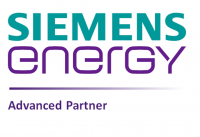Difference between Electrical and Pneumatic Actuators
Posted in Uncategorised, on June 29, 2016 By Admin
An actuator is a motor that moves or controls a specific mechanism or system. There are different types of actuators, depending on the job and type of work performed. Among the two most common are those used to convert energy, often in the form of compressed air, and those that use electric power. While the two share a similar concept, there are distinct differences.
In simple terms, electrical actuators convert energy into a motion or force. These actuators can be powered by pressurized air, fluid, or electricity. In comparison, pneumatic actuators convert energy into rotary or linear motion.
· Cost – Specific to cost, pneumatic actuators tend to be the most affordable. Designed to produce high speed and force, the only other type of actuator technology that can match it specific to size and strength is hydraulic power. To maximize the low overall cost, it is essential for the scale of deployment to match the compressor being used.
· Precision – For optimal precision and control, which is often critical for certain projects, electrical actuators are the better option. Although these actuators may not be as cost-efficient as those in the pneumatic category, they are still considered economical for a medium-scale job in which precision and control are vital to the project.
· Maintenance – As mentioned, pneumatic actuators are more affordable from a buying perspective. However, costs for maintenance and operation often offset any initial savings in the long term. Therefore, if you are interested in a pneumatic motor, it is recommended that you budget for expenses relating to airline installation and maintenance and cylinder replacement, and the cost of electricity for operation. Electrical actuators have a more rugged design. Because of that, there is less need for repair and maintenance.
· Operational Expense – Of the two types of actuators, electrical ones have a higher sticker price. However, the cost of operation is generally lower. If you need to purchase just a few actuators, pneumatic ones are probably the better choice. On the other hand, if you will use multiple actuators on a regular basis, you might want to consider performing a cost analysis to determine the most cost-effective option.
The bottom line is that there are advantages and disadvantages for both types of actuators. Typically, electrical ones are ideal for medium to large-scale operations while pneumatic ones are usually the best option for smaller projects. Regardless of your choice, make sure that you identify reputable pneumatic actuator suppliers or electric actuator distributors so that you get the most bang for your buck.



























